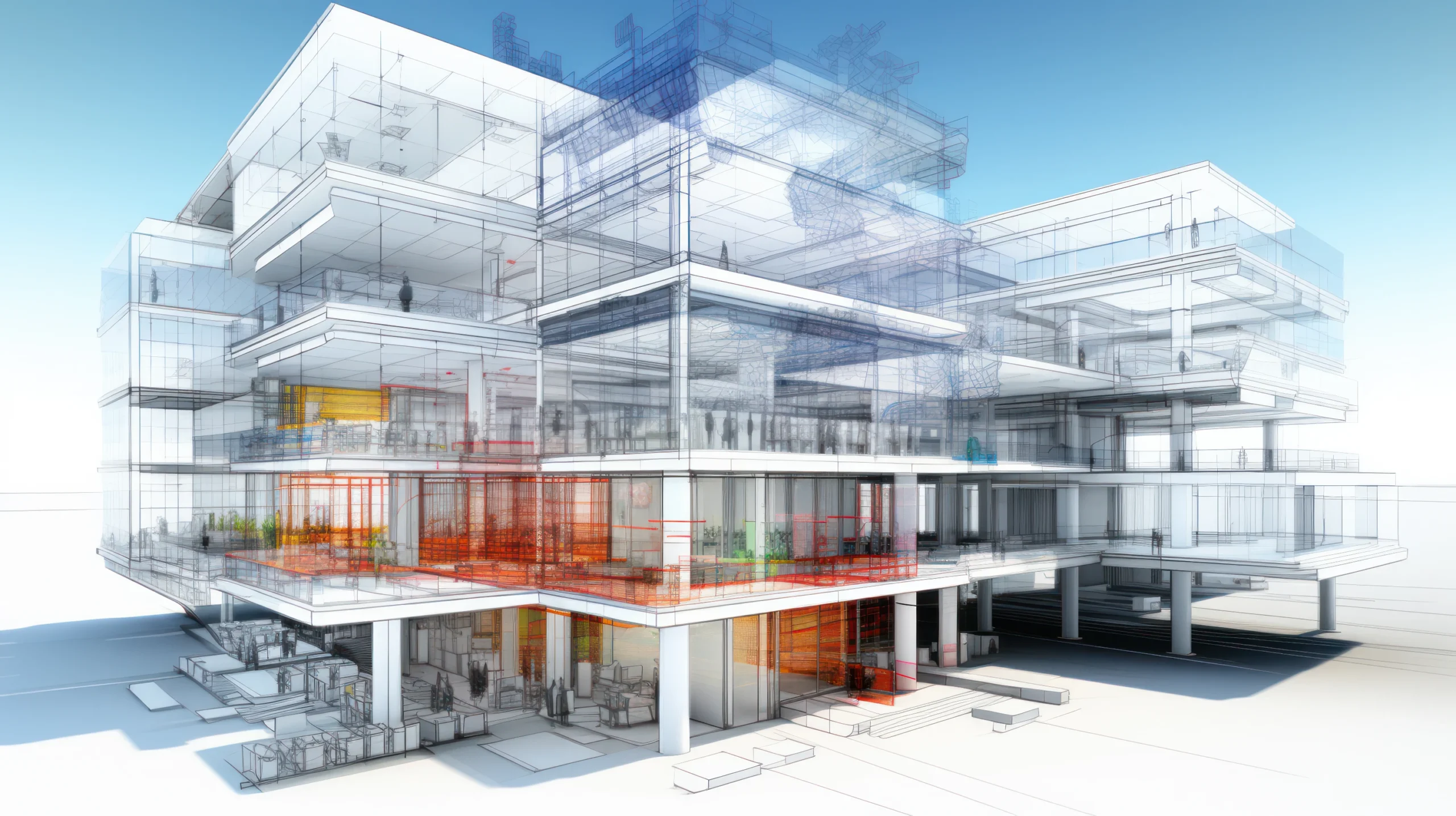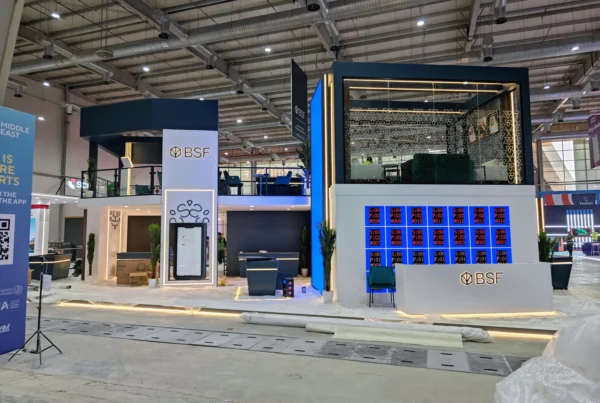Imagine showcasing an entire building’s layout, occupant flow, and even finishing options to stakeholders around the globe—without requiring them to install hefty software or own a powerful local machine. Cloud streaming makes this possible, letting you “stream your building twin” to any connected device. In the sections below, we’ll explore the fundamentals of cloud streaming digital twin technology, discuss occupant analytics strategies, and present real-world benefits for real estate marketing, facility management, and beyond.

1. Why Streaming Digital Twin?
1.1 Overcoming Traditional Constraints
In the past, large digital twin files or occupant flow simulations often demanded high-end local workstations, limiting accessibility to those with the hardware muscle. Cloud streaming flips that dynamic. By rendering your digital twin in the cloud, you turn occupant analytics–based building scenarios into a real-time interactive experience accessible on virtually any device—be it a phone, tablet, or basic laptop.
According to McKinsey & Company, user-centric solutions that provide real-time data accelerate collaboration and speed up decision-making. With occupant analytics tracking user interactions, your building twin can adapt content instantly, delivering occupant-based finishing details or occupant flow demos on the fly.
1.2 Simplified Global Reach
Cloud streaming fosters global collaboration. From a prospective investor in Tokyo to a structural engineer in Toronto, everyone sees the same occupant analytics–driven model, updated in real time. For real estate off-plan marketing, occupant analytics data can highlight user preferences, letting you customize occupant flow scenarios or design variations to match prospective buyers’ priorities—no matter where they are located.
2. Core Technology: Cloud Rendering & Real-Time Updates
2.1 The Anatomy of Cloud Streaming
Cloud streaming digital twin typically involves:
-
High-Performance Servers: Providers like Microsoft Azure or Amazon Web Services (AWS) host advanced GPU instances that render occupant-driven 3D content in real time.
-
Low-Latency Protocols: Streams are sent to end-user devices with minimal lag, ensuring occupant analytics–driven changes appear instantly.
-
Occupant Data Integration: Occupant analytics can direct how the twin adjusts occupant flows, visuals, or occupant-based finishing options, fueling a dynamic user experience.
2.2 Continuous Synchronicity
Because occupant analytics track each user’s interactions, the building twin updates in real time for everyone. For instance, if a developer modifies occupant flow logic to reflect a new corridor design, the occupant-based occupant flow simulations shift accordingly, and all remote participants see the change simultaneously. This synergy creates a near-live environment reminiscent of the multi-user occupant flows found in smart interactive solutions, only executed via the cloud.

3. Designing for User-Centric Streaming Digital Twin
3.1 Latency & Bandwidth Considerations
Delivering occupant analytics–driven, high-fidelity 3D scenes across the web requires stable internet connections. For best results:
-
Adaptive Bitrates: If occupant data shows a user’s weak bandwidth, the stream automatically downgrades resolution.
-
Optimized Models: Keep occupant flow simulations or occupant-based environment data well-structured, so even moderate networks handle them without lags.
In regions with less robust infrastructure, occupant analytics might detect subpar connection speeds, prompting the cloud to serve a more streamlined occupant flow scene or simpler finishing textures.
3.2 Intuitive Interaction Layers
Streamed 3D content can feel awkward if the UI is clunky. By melding occupant analytics with multi-user occupant flow design, developers can ensure:
-
Guided Pathways: Occupant analytics steer visitors to popular finishing or occupant-based occupant flow scenarios.
-
Touch-Friendly Controls: Mobile users can pinch-zoom or swipe occupant flow maps easily, while occupant data logs each gesture.
-
AR Overlays: Some solutions let occupant analytics–tracked visitors point their phone at a printed code to see occupant flows projected on a real-life model.
For a systematic approach to occupant-friendly design, check out our user-centric strategies in an interactive showroom article, which elaborates on occupant-driven transitions in immersive environments.
4. Leveraging Occupant Analytics in the Streamed Twin
4.1 Tracking User Engagement
Occupant analytics reveal how visitors navigate a building twin, which occupant flow scenarios they test most, or how long they linger on certain finishing features. This occupant data:
-
Informs Future Iterations: If occupant analytics highlight repeated interest in high-tier finishes, staff can tailor occupant-based marketing messages.
-
Drives Real-Time Adaptation: occupant analytics can prompt the digital twin to highlight relevant occupant flow paths or material specs, personalizing each occupant’s visit.
4.2 Multi-User Collaboration
In large architectural or real estate projects, occupant analytics can unify multiple viewers in real time. For instance, occupant data indicates a cluster of overseas investors exploring occupant-based occupant flows—on detection, a marketing rep can jump in to demonstrate specific design variants or cost breakdowns. This occupant synergy fosters a sense of a shared environment, even across continents.
5. Real Estate Marketing & Global Collaboration
5.1 Off-Plan Launches
Imagine unveiling a high-rise condo project to global buyers. With occupant analytics capturing each prospect’s layout interests, the system can automatically illustrate occupant flow in favored units—like an occupant-based “tour” highlighting the living room space that occupant data shows most popular. If occupant analytics reveal repeated interest in corner units, staff can pivot marketing to emphasize occupant flow advantages in these premium spots.
5.2 Cross-Disciplinary Teamwork
For architects or engineers, occupant analytics–driven cloud streaming means fewer site visits or complex local installations. Instead, occupant analytics data plus real-time occupant flow demonstrations allow them to tweak occupant-based corridor expansions or occupant flow capacity, see occupant analytics–tracked feedback from colleagues, and finalize changes without extensive in-person gatherings. According to Gartner, this approach significantly reduces project time and fosters occupant-based alignment among stakeholders.
6. Implementation & Best Practices for Streaming Digital Twin
6.1 Start Simple, Then Scale
Don’t attempt occupant analytics–rich, fully photorealistic streaming day one if your team lacks specialized knowledge. A minimal occupant flow scenario or basic finishing overlay might suffice initially. Gather occupant data on usage, ROI, and user feedback, then ramp up complexity as occupant analytics confirm the approach is beneficial. For structured growth tips, see scaling up your strategy: best practices for implementing a 2025 digital interactive experience on any budget.
6.2 Secure Your Environment
While occupant analytics can refine occupant flows, it also collects user behavior data. Ensure encryption for occupant data transmissions, align with local privacy laws, and maintain strict user access controls—particularly for sensitive blueprint or occupant-based occupant flow files. Providers like Azure and AWS offer robust security features to handle occupant analytics at scale.
6.3 Embrace Continuous Updates
A building twin is never static. occupant analytics can highlight occupant-based occupant flow changes, new finishing collections, or structural modifications. By streaming from the cloud, these occupant-based refinements roll out to all viewers simultaneously—guaranteeing up-to-date occupant flows and design references without manual updates from end-users.

7. Gauging ROI and Impact
7.1 Conversion Rates & Occupant Analytics
For real estate sales, occupant analytics might track how many occupant-based streaming sessions end in deposit reservations. In engineering or design contexts, occupant data might measure how quickly occupant flow or occupant-based structural solutions get approved, boosting collaboration efficiency.
7.2 Travel & Operational Savings
Managers no longer need to assemble entire teams on-site; occupant analytics–enabled cloud streaming allows remote collaboration. This occupant-based approach drastically cuts travel costs and compresses timelines. Meanwhile, occupant data helps refine design decisions faster.
7.3 Occupant or User Satisfaction
Finally, occupant analytics provides insights on user satisfaction—like repeated sessions or occupant-based finishing tests. If occupant flow data shows a user returning for multiple tours, it might imply strong interest or the need for additional occupant-based info, guiding staff on how to follow up or what occupant flow scenario to highlight next.
8. Future Outlook: AI-Driven Personalization & Metaverse
8.1 AI Personalization Based on Occupant Data
As occupant analytics gather more user behaviors, AI engines can adapt occupant flows or environment visuals to each user’s priorities. For instance, occupant analytics could indicate a preference for open-concept designs, triggering occupant flow modifications or furnishing suggestions that appear automatically—akin to advanced occupant-based customization.
8.2 Metaverse-Like Virtual Spaces
In the near future, occupant analytics might unify building twins with multi-user VR or AR frameworks, hosting occupant-based occupant flow discussions or brand showcases. Team members worldwide could see occupant data–tracked changes in real time. This merges occupant-based cloud streaming with next-level immersion—hinted at in emerging concepts for the metaverse or extended reality in architecture.
9. Overcoming Design and Deployment Challenges of AI-Avatar Kiosks
9.1 Avoiding the Uncanny Valley
An AI avatar that’s almost human but not quite can be unsettling. Striking the right level of realism is key. Some dev teams opt for stylized or animated avatars that occupant analytics data show are more approachable. Others push hyper-realism but fine-tune micro-expressions meticulously to maintain user comfort.
9.2 Data Privacy & Transparency
Collecting occupant analytics, audio logs, or emotional data might raise privacy concerns. Ensure disclaimers clarify data usage and storage. In certain regions, digital avatars might need additional approvals if occupant analytics captures or processes personal identifiers. Strict security and transparent disclaimers maintain user trust.
9.3 Continuous Refinement
AI-based kiosks require ongoing training. Occupant analytics might reveal new frequently asked questions or topics unaddressed in the current model. Regular updates keep the kiosk relevant and occupant flow data fresh, reinforcing trust as the system remains accurate over time.
Conclusion: Unlocking the Power of Streamed Digital Twins
Cloud streaming transforms the digital twin from a static, high-end local file to a globally accessible occupant analytics–powered environment. Whether you’re marketing off-plan condos, orchestrating occupant-based occupant flow simulations for engineers, or simply allowing remote buyers to visualize finishing choices, streaming ensures seamless collaboration and occupant-based personalization. By pairing occupant analytics with robust user-centric design—and securing your data through proven cloud providers like Azure or AWS—you can confidently “stream your building twin anywhere,” delivering frictionless occupant experiences that adapt to each user’s needs.
Ready to adopt occupant analytics–driven cloud streaming for your digital twin solutions? Contact us for specialized help in merging occupant flows, 3D streaming technology, and real-time occupant analytics. And if you want to explore how occupant analytics fosters user-centric design, check out our insights on user-centric strategies in an interactive showroom. By embracing occupant-based cloud streaming, you’ll equip your brand, project teams, or stakeholders with the ultimate tool for collaborative, immersive building exploration—no matter where in the world they might be.
FAQ: Cloud Streaming Digital Twin – Stream Your Building Twin Anywhere
1. How does cloud streaming differ from traditional on-premises digital twin setups?
Cloud streaming offloads rendering and data processing to remote servers from providers like Azure or AWS. This means users can view and manipulate the building twin through a standard device—laptop, tablet, or phone—rather than needing high-end local hardware.
2. Why integrate occupant analytics into a cloud-based digital twin?
Occupant analytics tracks real-time interactions, occupant flow, or user preferences. This data shapes the virtual environment on the fly, delivering highly personalized occupant-based experiences. For example, if occupant data reveals repeated interest in certain finishing layouts, the system can highlight those features proactively.
3. Can multiple stakeholders collaborate on the same streamed digital twin?
Yes. One advantage of cloud streaming is multi-user, real-time synchronization of occupant analytics and environment changes. Team members across continents can explore occupant flows, edit design options, and witness the same updates instantly—enhancing global coordination and cutting travel costs.
4. What are the main bandwidth or latency concerns with streaming high-fidelity 3D environments?
High-resolution visuals and occupant analytics updates require stable internet connections. Many setups use adaptive bitrate streaming, lowering texture detail if occupant data suggests weak bandwidth. Ensuring a reliable network infrastructure is key to reducing latency and preserving a smooth occupant-based experience.
5. In what ways does cloud streaming benefit off-plan real estate marketing?
Cloud streaming lets prospective buyers explore occupant-based finishing details, occupant flows, and day/night lighting without hefty local software. Remote users can fully grasp the project’s scale, leading to faster decisions and potentially higher off-plan sales. Occupant analytics then logs each user’s preferences, guiding future marketing or project tweaks.


